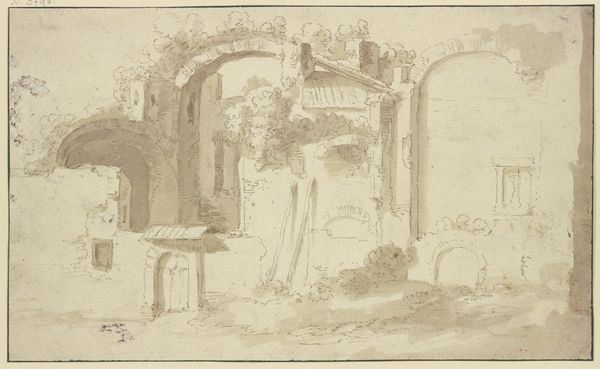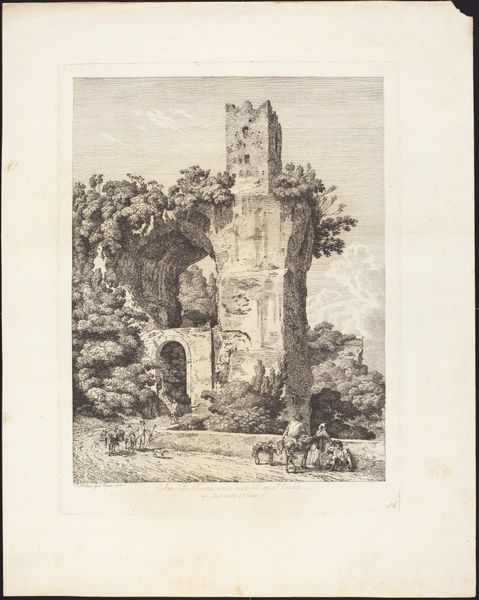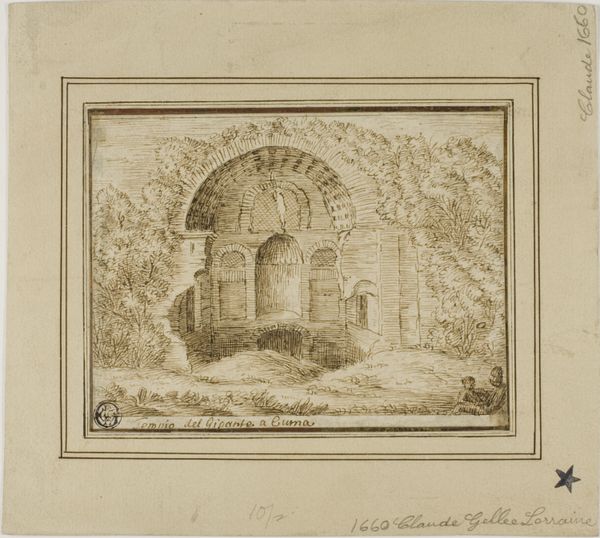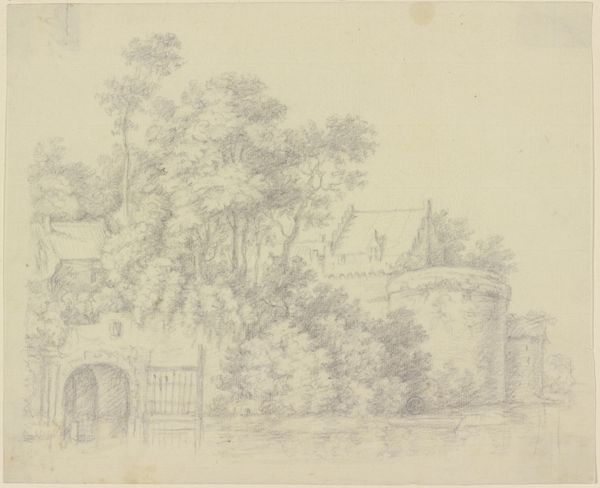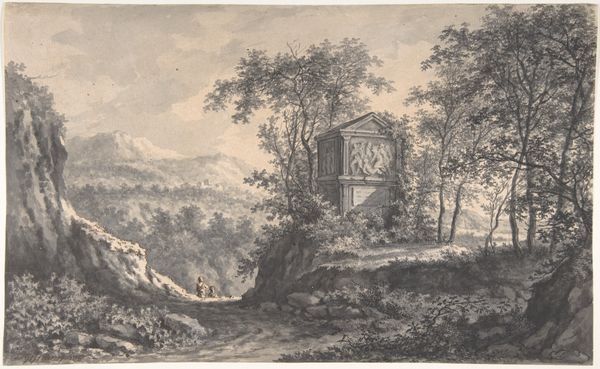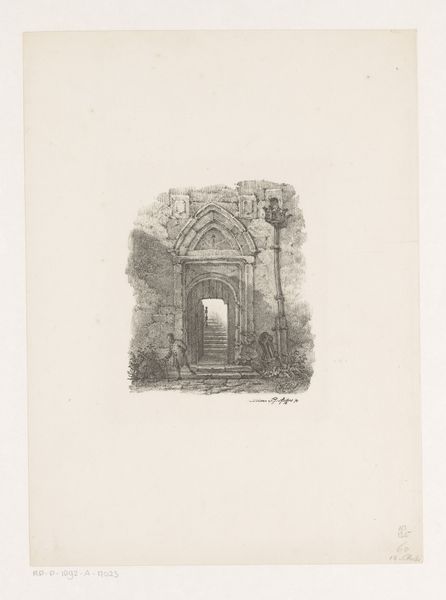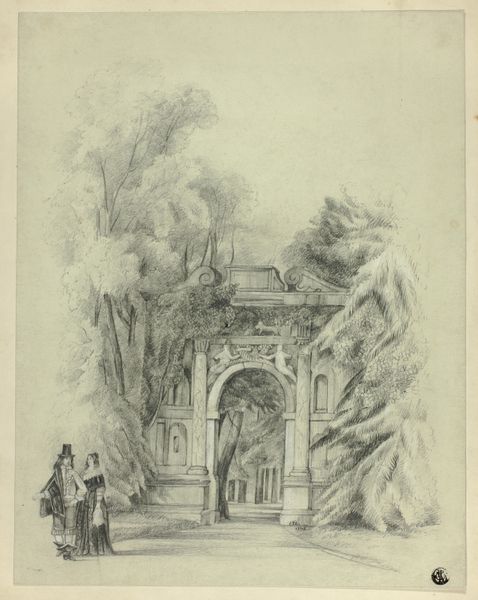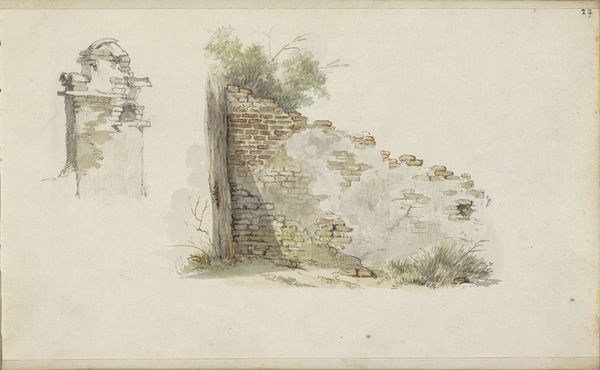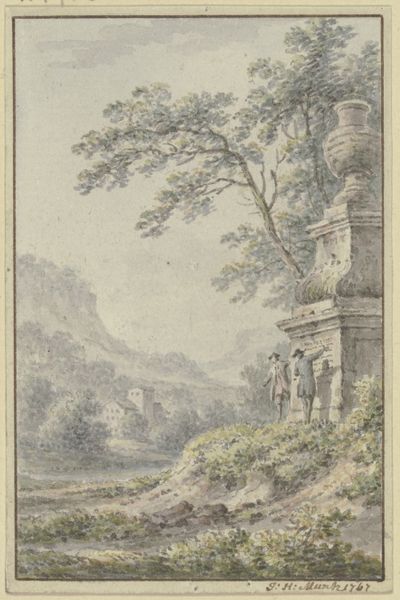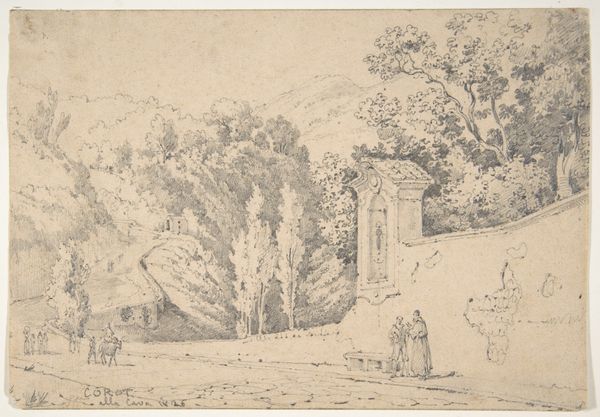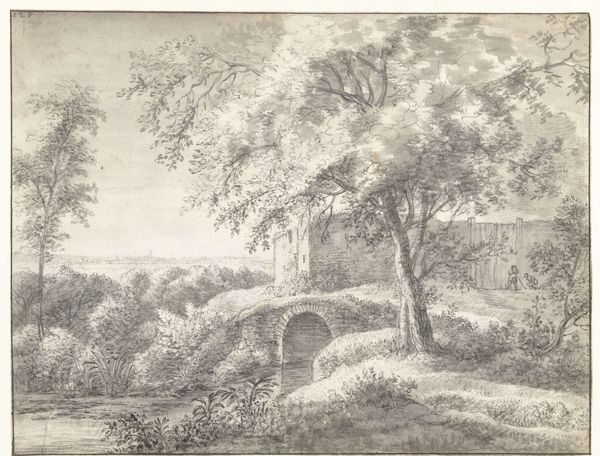
Title Page to a Group of Plans, Elevations and Scenic Interiors of Lea Castle, Worcestershire, Containing a View of New Front to the Ice House 1816
0:00
0:00
drawing, print, etching
#
drawing
# print
#
etching
#
landscape
#
etching
#
romanticism
Dimensions: sheet: 11 x 14 in. (27.9 x 35.6 cm)
Copyright: Public Domain
Editor: This is the "Title Page to a Group of Plans, Elevations and Scenic Interiors of Lea Castle, Worcestershire, Containing a View of New Front to the Ice House," created in 1816 by John Carter, employing drawing, print, and etching. I find it rather dreamlike, with its hazy depiction of classical structures overtaken by nature. What strikes you most about this piece? Curator: It’s interesting that you mention "dreamlike." From a historical perspective, I see this piece as very much engaged with the Picturesque movement. Notice how Carter frames this landscape not just as a representation of Lea Castle, but as a curated view. He's participating in a dialogue about the perception and presentation of landscape within early 19th-century British culture. To your eyes, does that aesthetic frame serve any clear representational goals? Editor: Well, perhaps to idealize and romanticize. The crumbling stone and encroaching foliage suggest a beautiful, perhaps even noble, ruin. There’s also that perfectly placed obelisk in the foreground. Curator: Precisely. The inclusion of classical elements and a softened aesthetic speaks to the wider consumption of history that pervaded Britain. Country estates, like Lea Castle, were projecting a specific type of historical identity, and this etching becomes another stage for that presentation. It becomes more of a controlled performance of an idyllic past, rather than a snapshot of a place. Editor: I never considered the artwork as a staged presentation of history. This changes my understanding of the artist's decisions! Curator: Considering the institutional frameworks of landscape representation really changes the perspective, doesn’t it? I find that a socio-political approach, understanding where the artwork is seen and shared, is critical to interpreting its core message. Editor: Yes, absolutely. Seeing art as participating in a broader historical and social conversation illuminates details that may have otherwise gone unnoticed. Thank you.
Comments
No comments
Be the first to comment and join the conversation on the ultimate creative platform.

